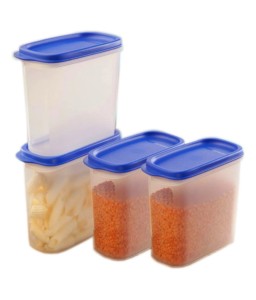Proper Food Storage

-Sometimes you luck out and get a deal on bulk foods. Or, a manufacturer offers larger containers than your fish can eat in a season. Too bad. I do NOT recommend that you buy big bags of food unless your fish can eat it all in a season. This is because it’s necessarily difficult to keep 45 pounds of food in the fridge. Of course, if you CAN, do it! Otherwise, the fish food sits in the bag in a “cool dark place” and weevils hatch in it and the food is lost. Or moulds grow in it, on the condensation-side of the bag and it’s lost. Or, the cats tear out the bottom corner of the bag and the food spreads across the floor of the garage like a cancer. Can you tell “I’ve been there, done that”??
Refrigerate foods, DON’T freeze them. Freezing damages (lyophilizes = freezer burns) the fats in the food and so the fat-soluble vitamins are compromised.
Foods which are packed in nitrogen (no oxygen) by the manufacturer are better than food which is in cans with oxygen. If you can find food which has a bag that allows expression of air from the bag and resealing, that is optimal.
Old Food?
If food begins to smell “funny” or develops a fuzz on it, changes color, sticks together or crumbles down, it’s old or “bad” and should be discarded. Feeding “bad” food will land you in a world of hurt with your fish, because much of what grows in fish foods produces what are known as “Aflatoxins” which can cause injury, deficiency, and broken backs, in fish fed these spoiled foods. Truly, fish should go hungry while waiting for you to get fresh food, rather than being fed spoiled food “just for a few days” because it matters.